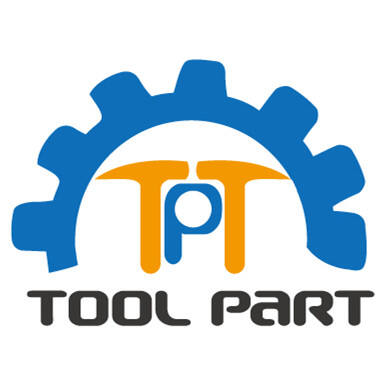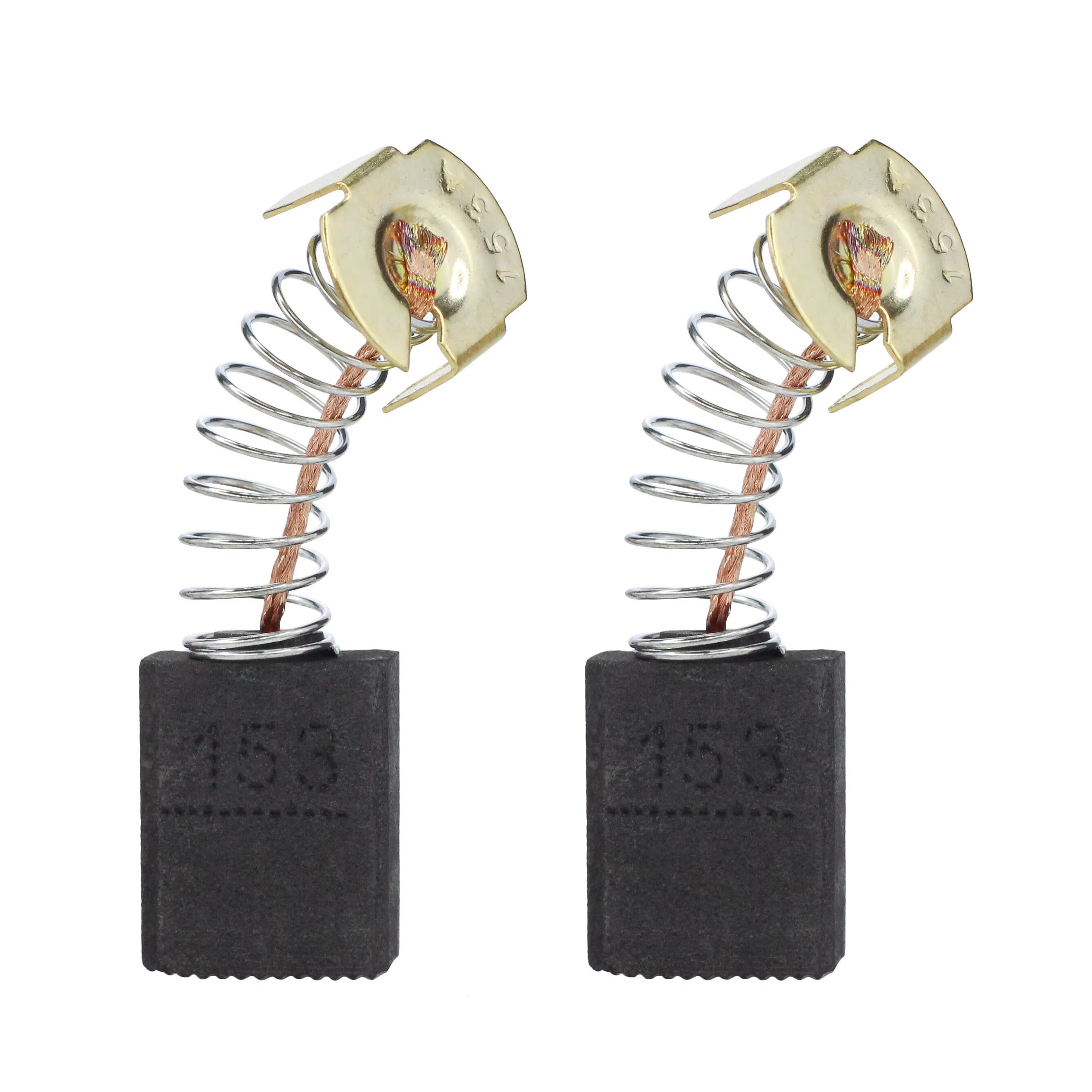Medžiagų pasirinkimas siekiant ilgesnio įrankių dalių naudojimo laiko
Aukšto našumo aljansai: karbidas ir aukštos greičio plienas (HSS)
Medžiagos pasirinkimas yra labai svarbus, norint užtikrinti ilgalaikius įrankių dalių eksploatacinius parametrus ir patikimumą dirbant dideliu slėgiu. Paimkime pavyzdžiui Kietąją plieną ir Aukšto greičio plieną (HSS) – tai du geriausi šios sritys atstovai. Kietasis plienas išsiskiria dėl savo išskirtinio kietumo ir nubrozdinimų atsparumo, net kai yra veikiamas stiprios kaitros arba šiurkštaus elgesio. Būtent todėl jis taikomas tikslumo pjūklų įrankiuose, kurie nuolat susidoroja su sunkiomis sąlygomis. Tuo tarpu HSS siūlo ką kita. Jis išlaiko savo stiprumą, kartu būdamas pakankamai atsparus, kad išlaikytų daugkartinį poveikį be lūžių. Daugelis dirbtuvių automobilių sektoriuje ir ypač aviacijos pramonėje labai pasikliauja abiem medžiagomis, kad įrankiai ilgą laiką veiktų efektyviai. Atsižvelgiant į faktinius duomenis, gautus iš gamybos patalpų, kietasis plienas dažniausiai yra geriau atsparus nubrozdinimams, tačiau yra brangesnis nei HSS.
Karbidas ir aukštojo greičio plienas (AGP) randa savo vietą visuose gamybos aplinkose, kiekvienas suteikiantis skirtingas privalumus. Paimkime, pavyzdžiui, karbidą – jis puikiai tinka ten, kur reikia greito ir tikslaus darbo, nes gali išlaikyti ekstremalų karštį be deformacijos. Meistrai mėgsta jį naudoti CNC apdirbimo procesuose, kur svarbu išlaikyti įrankio formą esant aukštai temperatūrai. AGP geriau tinka tada, kai svarbesnė ilgaamžiškumas nei grynas kietumas. Šis materialas dažnai naudojamas grąžtų ir frezavimo įrankių gamyboje, kuriems reikia sugerti smūgius darbo metu. Žinoma, karbido įrankiai paprastai kainuoja nuo dvigubai iki penkiskart daugiau nei panašūs AGP įrankiai, tačiau jie tiek ilgai tarnauja, kad daugelis dirbtuvių iš tikrųjų sutaupo lėšų per ilgą laiką. Pusiausvyra tarp pradinės investicijos ir ilgesnio tarnavimo laiko paaiškina, kodėl šie materialai išlieka pagrindinės bet kokios rimtos dirbtuvės įrankių biudžeto dalys.
Laidingųjų metalių vaidmuo įrankių optimizavime
Tinkamas nubrozdinimui atsparių metalų pasirinkimas leidžia pasiekti maksimalų pramoninių įrankių tarnavimo laiką. Kai gamintojai renkasi medžiagas, sukurtas atlaikyti nuolatinį trintį ir įtampą, įrankių komponentai tarnauja kur kas ilgiau nei standartinės alternatyvos. Pagal įvairių sektorių lauko duomenis, pereinant prie tinkamų nubrozdinimui atsparių medžiagų, įrankių ilgaamžiškumas dažnai padidėja apie 40 procentų, o tai reiškia, kad per laiką reikia mažiau keisti įrankius ir sutaupyti daugiau lėšų techninio aptarnavimo sąskaitoms. Paprasti šios kategorijos variantai apima Stellite lydinius, kurie yra žinomi dėl išskirtinio kietumo, bei volframo karbidas, kuris puikiai atlaiko abrazyvines jėgas. Čia taip pat naudojami titano lydiniai, ypač ten, kur svarbu tiek stiprumas, tiek lengsva. Šios medžiagos užtikrina sklandžią operacijų vykdymą be netikėtų prastovų, sukeltų nubrozdinus įrenginius.
Nubrozdiklūs metalai būna įvairių formų, kiekvienas su unikaliomis savybėmis, tinkamais skirtingoms pramonės reikmėms. Paimkime, pavyzdžiui, Stellite lydinius, kurie turi didelį kobalto ir chromo kiekį, dėl ko jie pasižymi išskirtine kietumu. Jie dažnai naudojami sunkiose sąlygose, tokiuose kaip gilaus vandenyno naftos gręžiniuose, kur kiti medžiagos sugestų per kelias dienas. Taip pat yra volframo karbidas, galbūt kietiausia komerciškai prieinama medžiaga. Kasyklų įmonės labai jo priklauso, nes niekas nėra labiau nubrozdinama nei grąžtų galvutės, susidorojant su uolienų formavimu. Australijos kasykla pasiekė tikrų rezultatų pakeitusi standartinius plieno įrankius volframo karbido danga. Jų gamybos rodikliai išaugo apie 30 %, o prastovų laikas žymiai sumažėjo. Taip pat negalima nepaminėti ir ekologinių privalumų, nes ilgiau tarnaujanti įranga reiškia mažiau pakeitimų ir mažiau atliekų susidarymą laikui bėgant. Gamintojams, siekiantiems sutaupyti lėšų bei išlaikyti ekologiškumą, šios medžiagos yra protingos investicijos, nepaisant didesnių pradinių kaštų.
Sudėtingi apdengimai ir paviršiaus apdirbimo procedūros
TiN ir TiAlN apdengimai: kietumo ir karšties varžymo gerinimas
Dangalai, vadinami titano nitridu (TiN) ir titano aliuminio nitridu (TiAlN), tikrai padidina įrankių kietumą ir atsparumą karščiui. Gamybos sektoriaus specialistai pastebėjo, kad šie dangai išsiskiria, nes atlaiko įvairaus tipo nubrozdinimus esant didelėms pjūvio spidoms ir labai karštomis sąlygomis, nesugenda. TiN turi būdingą auksinę spalvą ir padaro įrankius kietesniais, taip pat sumažina trintį per operacijas. Tuo tarpu TiAlN dar labiau padeda išlaikyti stabilumą esant aukštai temperatūrai, todėl puikiai veikia ten, kur temperatūra yra labai aukšta.
TiN ir TiAlN danga iš tiesų padeda pagerinti įrankių našumą, nes padaro juos kietesnius ir atsparesnius šilumai. Kai įrankiai tampa kietesni, jie ilgiau išlaiko aštrumą, o tai ypač svarbu, kai jie naudojami visą dieną. Papildoma atsparumas šilumai reiškia, kad šie įrankiai gali atlaikyti sunkesnes sąlygas be gedimų ar formos praradimo. Pagal kurioje nors žurnale „Journal of Manufacturing Processes“ paskelbtus tyrimus, įrankiai su TiAlN danga tarnauja maždaug dvigubai ilgiau nei įprasti neapdoroti įrankiai. Toks ilgaamžiškumas paaiškina, kodėl daugybė gamintojų pradėjo pasikliauti šiomis specialiomis dangomis pramonės reikmėms.
Pramonės dažymo taikymas iš tikrųjų atitinka savo pažadus, kalbant apie našumo gerinimą. Paimkime, pavyzdžiui, TiAlN danga aptrauktus pjūklus – tyrimai rodo, kad jie gali sumažinti eksploatacinius kaštus maždaug 20 procentų, daugiausiai dėl to, kad tarp pakeitimų jie trunka ilgiau ir efektyviau veikia gamybos cikluose. Ne tik tai, kad iš karto sutaupoma pinigų, šios specialios dangos iš tikrųjų padidina visos gamyklų produkciją. Kai įrankiai ilgiau išlieka aštrūs, reikia rečiau stabdyti mašinas dėl remonto arba keisti nubrozdintas dalis, o tai reiškia mažiau pertraukimų gamybos procese ir galiausiai daugiau pagamintų produktų be vėlavimų.
Kaip paviršiaus apdirbimo procedūros sumažina ausėjimą ir sabloną
Paviršiaus apdorojimas leidžia išvengti per ankstyno įrankių nubrozdinimo, todėl jie ilgiau tarnauja ir geriau veikia. Pvz., cementacija, azotojimas ir anodinis oksidavimas keičia metalinių įrankių paviršiaus savybes, padarydami juos atsparesnius pažeidimams, kurie laikui bėgant sukelia defektus. Šie procesai sukuria kietesnį įrankių išorinį sluoksnį, kuris veikia kaip apsauginė plokštė ir atlaiko kasdieninę bei intensyvią naudą gamybos aplinkoje. Daugelis dirbtuvių pastebėjo reikšmingą pagerėjimą įgyvendinus tinkamą paviršiaus apdorojimą, ypač tiems, kurie dirba didelėmis apimtimis, kad net nedidelis ilgaamžiškumo padidėjimas ilgainiui duoda didelę sutaupymo naudą.
Įvairių sektorių tyrimai nuolat parodo, kaip paviršiaus apdorojimas padeda realiai pailginti įrankių veikimo laiką. Paimkime, pavyzdžiui, kietinimą anglis jungiančiaisiais – statybos įrenginiuose naudojami tokiais būdu apdoroti komponentai paprastai išlaiko apie 30 procentų ilgiau nei neapdoroti. Kitas dažnas apdorojimo rūšis, azoto kietinimas, taip pat duoda puikių rezultatų, sumažindama įrankių nuovargį. Tai reiškia, kad įrenginiai gali veikti ilgesnį laiką tarp techninės priežiūros sustojimų, nes nesusiduriama su gedimais dėl nubrozdintų paviršių. Gamintojams tokie patobulinimai yra itin svarbūs, nes jie tiesiogiai leidžia sutaupyti lėšų per laiką ir užtikrinti sklandžią gamybą.
Paviršiaus apdorojimas ilgainiui taikomas įrankių gamybai suteikia tikrų privalumų. Po apdorojimo įrankiai ilgiau tarnauja ir geriau veikia, o tai reiškia, kad įmonės mažiau išleidžia jų taisymui ir mažiau sugenda gamybos cikluose įvairiose pramonės šakose. Įmonės, kurios naudoja šiuos apdorojimus, pastebi, kad jų operacijos kasdien vyksta sklandžiau, o reikia rečiau keisti nusidėvėjusius įrankius. Tai naudinga ne tik finansinei ataskaitai – darbuotojai gamyklos aikštėje vertina patikimus įrenginius, o ne nuolat sugendančią įrangą, kuri trikdo darbo eigą.
Tikslūs gaminimo technologijos optimaliam veikimui
Tikslūs tolerancijos ribojimai rankinio dalies gamyboje
Darant įrankių dalis, svarbu tiksliai išlaikyti mažas ribas, kad viskas ilgainiui veiktų kuo geriau. Kalbame apie tai, kad gamybos metu būtų išlaikytos matmenų reikšmės labai siaurose ribose. Net menki nukrypimai gali sutrikdyti dalių funkcionalumą ir sumažinti jų tarnavimo laiką. Kai komponentai tiksliai tiks vienas su kitu, tarp jų kyla mažiau trinties, todėl jie ne tokie greitai niplepa ir geriau veikia apskritai. Daugelis įmonių pasikliauja CNC apdirbimu ir lazerine pjūtve, kad nuosekliai atitiktų šiuos reikalavimus. Praktika rodo, kad įrankiai, pagaminti pagal aukštus standartus, tarnauja ilgiau ir ateityje reikalauja mažiau remonto darbų. Gamintojams, dirbantiems pramonės šakose, kur svarbūs milimetrai, šių tikslumo reikalavimų atitikimas yra būtinas, jei nori, kad įranga patikimai veiktų iš dienos į dieną.
Komponentų pusiausvyra tam, kad būtų stabili išvestis
Pasiekus tinkamą balansą įrankių dalyse, rezultatai tampa nuolatiniai ir įrenginiai veikia sklandžiai. Jei dalys tinkamai nebalansuotos, jos pradeda virpėti, kelti nemalonius garsus ir tiesiog neveikti taip tiksliai, kaip turėtų. Tai daro įtaką viso proceso kokybei ir sutrumpina brangių įrenginių eksploatacijos laiką. Įmonės jau daug metų naudoja metodus, tokius kaip dinaminis balansavimas ir kompiuterinis modeliavimas, kad užtikrintų tinkamą komponentų būklę, todėl sumažėja nepageidaujami judėjimai. Pažvelkite, kas įvyko XYZ Manufacturing įmonei praėjusiais metais, kai ji investavo į tinkamas balansavimo procedūras – prastovų laikas sumažėjo beveik 30 %. Įmonėms, kurios rimtai rūpinasi išlaikyti kokybišką gamybą, šie balansavimo metodai jau nebėra pasirinktiniai. Jie reikšmingai pailgina įrankių eksploatacijos laiką ir sutaupo lėšų remontui bei pakeitimui įvairiose pramonės sąlygose, kur svarbiausia tikslumas.
Priežiūros strategijos ilgalaikiems įrankių sveikatai
Reguliarios valymo ir riebalavimo geriausios praktikos
Laikant įrankių detales švariomis ir tinkamai sutepusiomis, užtikrinama jų ilgesnis tarnavimo laikas ir nuolatinis veikimas iš dienos į dieną. Dauguma specialistų sutinka, kad priklausomai nuo įrankių rūšies, yra tam tikrų geriausių praktikų, vertų laikytis. Pavyzdžiui, dėl valymo niekas nenori laukti, kol kils problema, ir tik tada imtis veiksmų. Geriau įrankius nuvalyti nedelsiant po kiekvieno naudojimo, ypač jei dirbama dulkėtoje ar nešvarioje aplinkoje, kur purvas kauptasi greitai. Nuvalius, reikia ant dalių tepti tepalą, kuris gerai veiktų su tuo konkrečiu įrankio medžiaga. Nepamirškite taip pat sudaryti kažkokio reguliaraus priežiūros plano. Kaip dažnai įrankiai reikalauja priežiūros, labai priklauso nuo to, kiek intensyviai jie naudojami ir kokį krūvį patiria eksploatacijos metu.
Skaičiai tikrai perteikia nAMAI kodėl šie techninės priežiūros procesai yra tokie svarbūs. Tyrimai rodo, kad įranga, kuriai netaikoma reguliaria priežiūra, sugenda maždaug 30% dažniau nei mašinoms, kurios gauna tinkamą priežiūrą. Pažvelkite į tai šitaip: kai mes ignoruojame paprastas priežiūros užduotis, tokias kaip dalių valymas ir tepimas, mes praktiškai kviečiame bėdas artimiausioje ateityje. Šie paprasti veiksmai padeda ne tik pailginti įrangos tarnavimo laiką – jie taip pat leidžia visai sistemai veikti geriau. Įmonės, kurios taiko tvirtas techninės priežiūros tvarkas, susiduria su kur kas mažiau netikėtomis sustabdymais ir mažiau nuostolių dėl neefektyvaus įrenginių veikimo.
Profilaktiniai tyrimai, kad iš anksto aptiktumėte ankstyvą ausą
Reguliarios apžiūros padeda laiku pastebėti įrankių dalių nublukimą dar prieš kildamas rimtesnes problemas. Kai įmonės nuolat tikrina savo įrankius, jos gali išvengti netikėtų gedimų ir ilgiau naudoti savo mašinas. Per tokių apžiūrų specialistai dažniausiai ieško dalykų, tokių kaip nubrozdintos paviršiai, rūdžių žymės arba silpnos metalinių dalių vietos, kur laikui bėgant kauptųsi įtampa. Kai kurios dirbtuvės jau dabar naudoja modernią įrangą, tokią kaip šilumos jutiklius arba vibracijos detektorius, kad aptikti problemas, kurias niekas nepastebėtų tik akimi. Šios technologijos leidžia aptikti problemas ankstyvame etape, kai jų šalinimas kainuoja daug mažiau nei vėliau keisti visas sistemas.
Tyrimai taip pat patvirtina šiuos metodus. Įmonės, kurios laikosi reguliarių patikrų, veikloje susiduria su kur kas mažiau problemų. Specialistai pažymi, kad kai įmonės sujungia reguliarias patikras su tam tikromis prognozavimo analizės priemonėmis, jos iš tiesų pasiekia geresnių rezultatų vykdydamos techninę priežiūrą. Iš esmės: kokybiška prevencinė techninė priežiūra ne tik neleidžia įrenginiams netikėtai sugesti. Ji ilgainiui sutaupo lėšų ir užtikrina sklandžią gamybą, išvengiant brangių delsimų, kuriuos sukelia netikėti gedimai.
DUK
Kodėl medžiagos pasirinkimas yra svarbus, norint užtikrinti rankinio įrankio dalies ilgalaikį naudojimą?
Tinkamos medžiagos, tokios kaip aukštos našumo lyginiai, pvz., Karbidas arba HSS, pasirinkimas užtikrina, kad rankinio įrankio dalys išlaikytų savo išstovėjimą ir efektyvumą įvairiuose eksploataciniuose sąlygose, pratęsdamos jų gyvenimo trukmę.
Kaip trikdžių neišjautos metalias prisideda prie rankinio įrankio optimizavimo?
Išlaidingi metalai, tokie kaip volframo karbidas ir cinkliavimo alejusiai, siūlo aukštą varžymo ir smūgio varžymo gebėjimą, didinant įrankių išsigyvenimą ir sumažindami būtinybę juos dažnai keisti.
Kodėl svarbūs TiN ir TiAlN pokliačiai?
Šie pokliačiai suteikia didesnę tvirtumą ir karštumui varžyti, dėl kurių įrankiai tampa išsigyvenamesni ir veiksmingesni ekstremaliose veiklos sąlygose, taip pailgindami jų naudingą gyvavimą.
Kokį vaidmenį atlieka tikslaus medžiotoją technikos gamyboje?
Tikslios medžiotoją technikos užtikrina griežtas tolerancijas, kurios yra būtinos optimaliam darbo dalies funkcijavimui ir ilgesniam jų naudojimo laikui, mažindamos priežiūros poreikį ir veiklos sustojimus.
Kaip prevencinės inspekcinės patikros pagerina įrankių priežiūrą?
Prevencinės inspekcinės patikros padeda nustatyti ankstynes našumos ir tarimų ženklus, leidžiant laiku atlikti priežiūros veiksmus, kurie užkariauja sistemos nesėkmes ir ilgiau išsaugo įrankio gyvavimo laiką.
Turinio lentelė
- Medžiagų pasirinkimas siekiant ilgesnio įrankių dalių naudojimo laiko
- Sudėtingi apdengimai ir paviršiaus apdirbimo procedūros
- Tikslūs gaminimo technologijos optimaliam veikimui
- Priežiūros strategijos ilgalaikiems įrankių sveikatai
-
DUK
- Kodėl medžiagos pasirinkimas yra svarbus, norint užtikrinti rankinio įrankio dalies ilgalaikį naudojimą?
- Kaip trikdžių neišjautos metalias prisideda prie rankinio įrankio optimizavimo?
- Kodėl svarbūs TiN ir TiAlN pokliačiai?
- Kokį vaidmenį atlieka tikslaus medžiotoją technikos gamyboje?
- Kaip prevencinės inspekcinės patikros pagerina įrankių priežiūrą?

